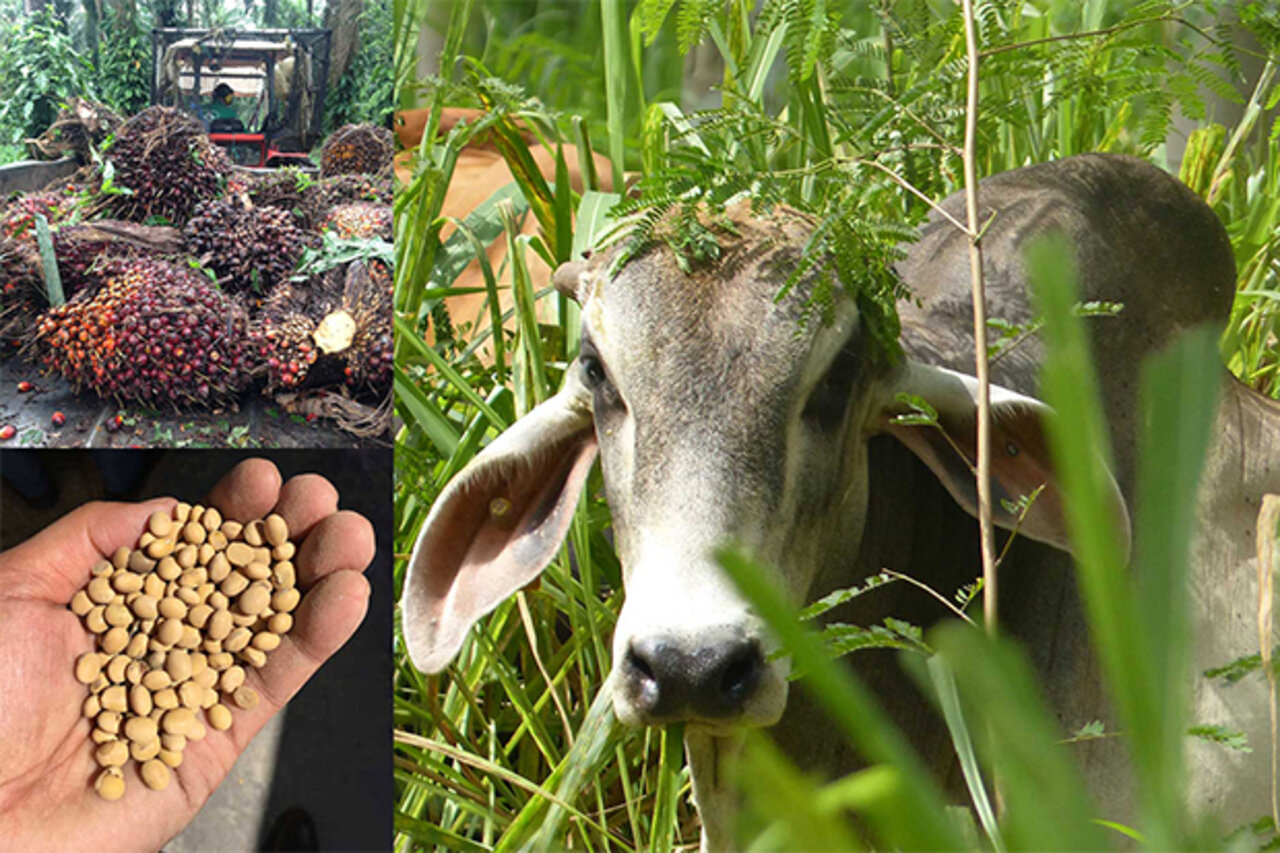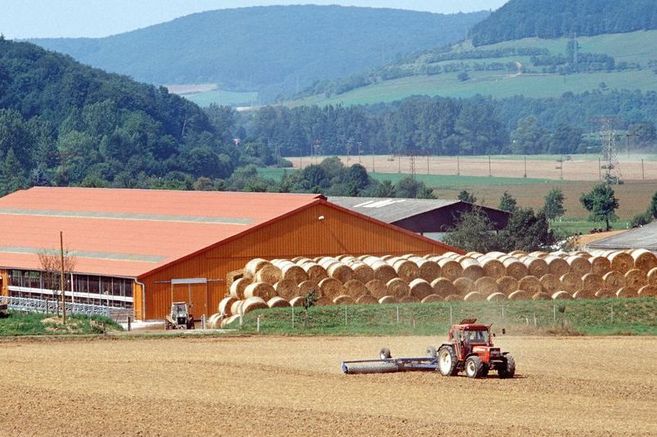Project
Can sustainable production of beef, palm oil and soy bean be profitable?

Cost-benefit analysis of best management practices of beef, palm oil and soybean production in Colombia and Paraguay
The production of beef, palmoil and soybean competes on land which has been covered by rainforest and other natural vegetation.
Background and Objective
Land us for the production of beef, plamoil and soybeans is often considered as a source of deforestation in South America. Further, the use of deforestated land by these activities is often considered to be un-sustainable and not resource-efficient. Detailed quantified information and data on a) the current situation and b) possible alternative and more sustainable land use options are usually not available.
This is a subproject of a bigger project on making agricultural production more sustainable. The main objective is to quantify the impact of various land use alternatives (practice change) on production systems, productivity, performance and economics.
The analysis encompasses beef production as well as palm oil and soybean production in ecologically sensitive areas in Colombia and Paraguay.
Target Group
Decision makers in politics, agriculture, non-government organisations, research and science
Approach
- Definition and quantification of a reference situation (baseline)
- Definitions and quantification of alternative land use scenarios
- Analysis of performance, productivity, revenues, costs and profitability for the baseline and the scenarios
- Before/ after and with/ without analysis of the baseline and the scenarios
- Conclusions and recommendations
Data and Methods
For the data collection and analysis the methods developed and applied in the agri benchmark Network are made available. For the data collection, detailed information on regionally typical farms is collected jointly withfocus groups of local experts (WWF, advisory, producers, researchers) applying the standard operating procedure of agri benchmark. The calculation of the results is done with the model TIPI-CAL. The survey and the calculation results are cross-checked with the participating experts. The focus groups are further activated for the specification and validation of the scenarios.
Results
The results are available in five separate reports to WWF. After final approval they can be downloaded from the agri benchmark website at http://www.agribenchmark.org/beef-and-sheep/publications-and-projects/projects.html. The reports cover the following individual farm situations and are only available in English:
- Colombia – Cow-calf and backgrounding case study in the flooded savannas of the Yopal region
- Colombia – Palm oil case study in the Piedemonte region (only used as baseline for the beef cases)
- Paraguay – Beef case study in the flooded palmar of the Paraguayan Pantanal
- Paraguay – Grains and oilseeds case study in the Chaco (only used as baseline for the beef cases)
- Paraguay – Beef case study in the dry Chaco of Paraguay (integrating crops + beef finishing)
The results for the two sites in the flooded savannas (Yopal - CO and Pantanal -PY) can be summarised as follows.
- The currently practiced cow-calf and feeder production are production systems that have been adapted to the locations and seasonal weather patterns for decades. In this respect, the possibilities for increasing productivity are relatively limited.
- Possibilities for adaptation lie particularly in the areas of improving fertility (especially animal identification, pregnancy tests), improving access to water, introducing mineral feeding, introducing rotational grazing, accompanied by expert advice.
- The above mentioned systems are already profitable in the baseline, if the opportunity costs, especially for the land, are not taken into account. The profitability ranges from 10 to 50 EUR per ha. With the implementation of the measures outlined above, it improves to up to 65 EUR per ha.
- It turns out that competition for land in the flooded savannas is not caused by palm oil or soya cultivation, but by the expansion of rice cultivation. Taking into account the opportunity cost of land (i.e. valuing the land at current rent prices), the systems are not profitable in the long term (see below for the level of land prices).
The above-mentioned aspects are even more relevant on land where arable farming is much easier than on flooded areas. For this reason, a case study was also carried out in Paraguay in the region of North Chaco, which is characterised by the combination of cattle farming (suckler cow and cattle fattening on pasture) and the cultivation of soybeans, sorghum and maize. Here it should be examined whether productivity increases can also be realised at such a location and thus a) the potential for land release and/or b) on the other hand spill-over effects in the sense of rising land prices and pressure for intensification on the above mentioned savannah location can arise. The following results can be recorded:
- This case study is already characterised in the baseline by an above-average yield and performance level. Cattle are already being kept in a rotation grazing system on pastures with improved yield potential. The farm has a total area of 21,000 ha, half of which is used for agricultural purposes and the other half remains in native forest due to legal requirements.
- The following productivity potentials were analysed and characterised as integration of arable farming and cattle farming: Cultivation of soybeans for sale as well as sorghum and maize silage for own consumption in cattle feeding on 15% of the pasture area, final finishing of steers and surplus heifers in feedlot, outsourcing of specific operations in plant production (sowing, planting, harvesting) to contractors, accompanied by expert advice. This creates the possibility of increasing the number of animals (about 30%) and improving the productivity parameters due to better feeding conditions.
- The above systems are already profitable in the baseline, if the opportunity costs, especially for the land, are not taken into account. With the implementation of the measures outlined above, profitability improves from about EUR 48 per ha in the baseline to about EUR 61 per ha in the integration scenario.
- At present, the road (for transporting grain and soya) and electricity infrastructure (for processing soybeans, among other things) in the North Chaco region is still poorly developed. The improvement of the infrastructure should greatly increase the incentive to expand arable farming and increase land prices.
- Consideration of the opportunity costs for land shows that the systems examined here are also not profitable in the long term and show a loss of around EUR 9 per ha in the baseline and a loss of just under EUR 4 per ha in the integration scenario (see below for the level of land prices).
- The land requirement for the increased number of animals in the integration scenario would be about 2900 ha higher if the production system from the baseline was used. This area therefore represents the land saving potential at the same or another location.
The following applies to all production systems investigated:
- The level of land prices does not necessarily reflect the profitability of alternative agricultural uses (for example rice). Other explanations include speculation on rising land prices due to improved infrastructure as well as land investments for reasons not directly related to agricultural production and its production potential.
- The transition phase from the baseline to the scenario involves investment in seeds and other inputs, possibly contractors, fences, pens, chutes and feeding infrastructure. This usually results in a decline in profit or cash flow in the first 3-4 years after the investment.
- The size of the investment, lack of access to capital, uncertainty and lack of know-how are the most common reasons why the measures described above are not carried out at all or only with delay.
- Higher productivity means potential to free up land for biodiversity and greenhouse gas reduction targets. Whether these are actually used depends largely on the support of appropriate policy measures, which must not only focus on individual farms but on the sector as a whole.
Thünen-Contact

Funding Body
-
World Wildlife Fund (WWF)
(international, privat)
Duration
12.2016 - 12.2019
More Information
Project funding number: 21042112
Funding program: BMUB - IKI (Internationale Klimaschutzinitiative)
Project status:
finished








